Keeping the air in your home pure and fresh can sometimes feel like a chore. Not only do you have to dust and vacuum often, but when you use convenient devices like air purifiers that do the job for you, you still have to remember to stock up on replacement filters and remember to change them out when they get dirty.
But what if an air filter could be cleaned easily and quickly and you’d never have to buy a replacement again? An air purifier with washable filter means you never have to change and discard filters again, right?
Sound too good to be true?
That’s because it is!
The Untold Truth
Marketers would have us believe the line “nothing for something.” Give me nothing, and in return you’ll get something awesome!

In the world of air purification, this game is quite common.
You don’t need a filter, they say. You don’t have to buy anything. Our units just clean the air without any ongoing cost. Just rinse them in the sink and you’re done.
And check this out. The upfront purchase price is even cheaper than those expensive HEPA filters because you don’t need that added technology cost. Not when you can have a patented super filter that uses NASA space science coupled with magic fairy dust and technology so advanced you could never understand it.
I know. I know. When you search Google, all the top ten articles say that the best air purifier with a washable filter is “Product A,” it’s easier to just click the link and go buy one of them.
But there’s an obvious conflict of interest here. Those affiliate websites promoting the best filterless air purifiers earn a commission every time you buy something.
They don’t make money if they tell you the real truth, the fact that:
Filterless air purifiers DON’T WORK!

Affiliate marketers really don’t care whether or not you buy a quality product. They’re optimizing for clicks and conversions which increases their bank balance.
I’ll be honest here. I get paid when you buy our air purifier, which is competing with all those washable filter brands. That’s also a giant conflict of interest. But, I actually care that the product works.
But please don’t just take my word for it, or anyone else’s for that matter. I’d rather you understand the science of air filtration and decide for yourself.
Rating Air Purification
Here’s the basic rating scale for air purification.
MERV, or Minimum Efficiency Reporting Values, is the way air filter effectiveness is measured.
A higher MERV rating equals higher filtration. You don’t need to understand how the measurements are taken in the lab, as it gets quite boring. All you really need is the final results chart below:
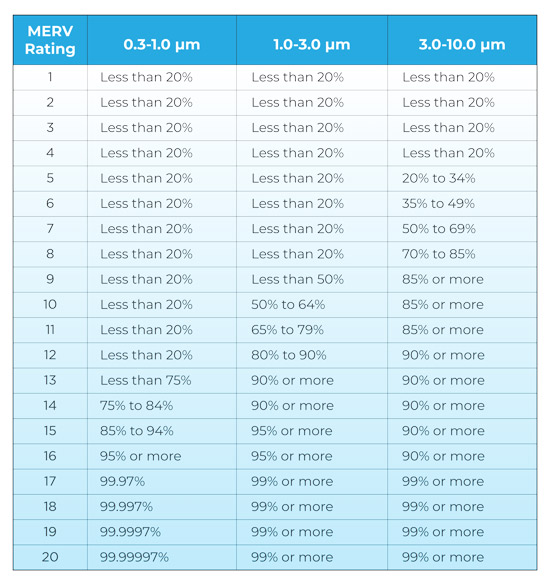
What does this mean in practical terms?
Simple. Higher is better.
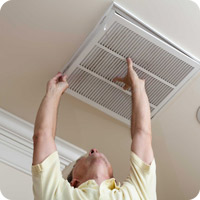
As far as indoor air quality goes, anything MERV 7 and below is, practically, garbage. Sure, they still capture many visible particles, so it’s better than nothing. But it’s not going to really clean the air with any notable effectiveness.
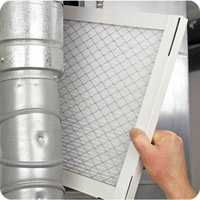
MERV 11 is generally a good idea of where to start for effective filtration. If you have to replace your furnace filter, make it a MERV 11.
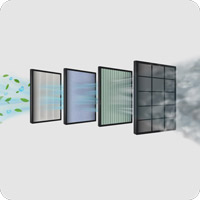
But the real magic happens when you jump up to MERV 13+ filters. Multiple passes through these high-end filters and you get close to total filtration. The only problem is the pressure drop begins to increase with these more restrictive filters, which means they can be harder to suck air through. HVAC systems in your home may not be able to handle them.

At MERV 16+ you are looking at HEPA filters. The official name is “High Efficiency Particulate Arrestance”.
This is the same technology used in military gas masks to filter harmful radiation at nuclear power plants. It’s been around since the 1950s and is the gold-standard for air filtration. None of the other fancy patented products come close to a HEPA filter.

MERV 16 to MERV 20 are all HEPA filters, but in most cases MERV 16 is what you’ll see. It’s required to achieve 99.97%+ of particulate filtration in the most difficult particle size of 0.3 microns (µm).
Washable Filter Quality Ranking
If MERV 7 and below are junk and MERV 11 and above are great, where do washable filters fall on this scale?
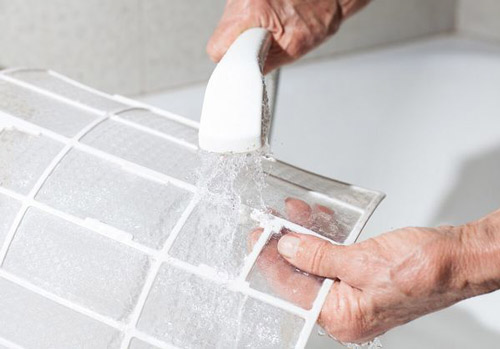
Washable filters are MERV 1 to MERV 4.
Look at the chart! Washable filters remove under 20% of all particulate matter at all measured levels in the sub 10-micron (µm) size range.
In short, an air purifier with a washable filter is deep into the “garbage” category.
“But wait!” I can hear you saying. “I own a washable filter and can see all the stuff it captures.”
You’re not wrong. They do capture things.
The human eye can only see particles larger than 50 or 60 microns (µm). Things like cat fur and enormous dust particles will be captured on a washable filter. Over a long period of time you will see a lot of large accumulation.
It looks quite impressive when you go to clean the washable filter.
Unfortunately, negative health effects from airborne particulate matter really begin with particles under 10 microns (µm).
As particle sizes get even smaller, called nanoparticles, the health effects get worse.

Most of the reason for this is because particles larger than 10 microns (µm) get stopped by the body’s natural defenses like hair follicles and mucous membranes well before they can enter the lungs and bloodstream. It’s these smaller particles that get into the blood stream and can cause chronic inflammation and long-term health effects like heart disease.
There’s a lot of literature using PM 2.5 particles (2.5 microns) as a proxy of air quality. As you can see in the MERV chart, washable filters don’t even begin to filter these size particles. And those even smaller nanoparticles that can cause really bad negative health effects? They go right through those washable filters.
Cleaning Air Purifiers with Washable Filters – Short Answer: It Sucks
Trust me on this, I’ve owned air purifiers with washable filters. This was before I knew anything about indoor air quality, so you can forgive me here.
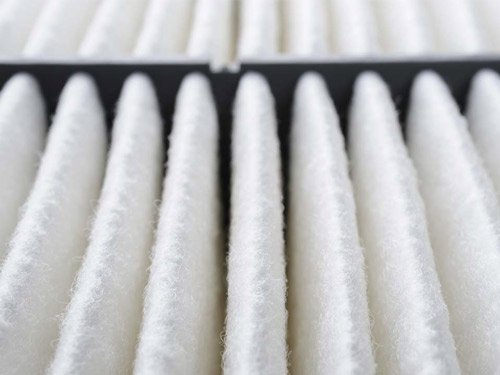
Washable filters are not enjoyable to clean. You have to vacuum them, then run them under the sink faucet, and then pull out all that hair and grime from your sink trap. It’s gross.
Compare that to simply pulling out a filter and putting it in your outdoor garbage can. Easy as that.
Plus, filters are actually quite cheap.
A 3-pack of MERV 12 furnace filters on Amazon are under $10 a piece.
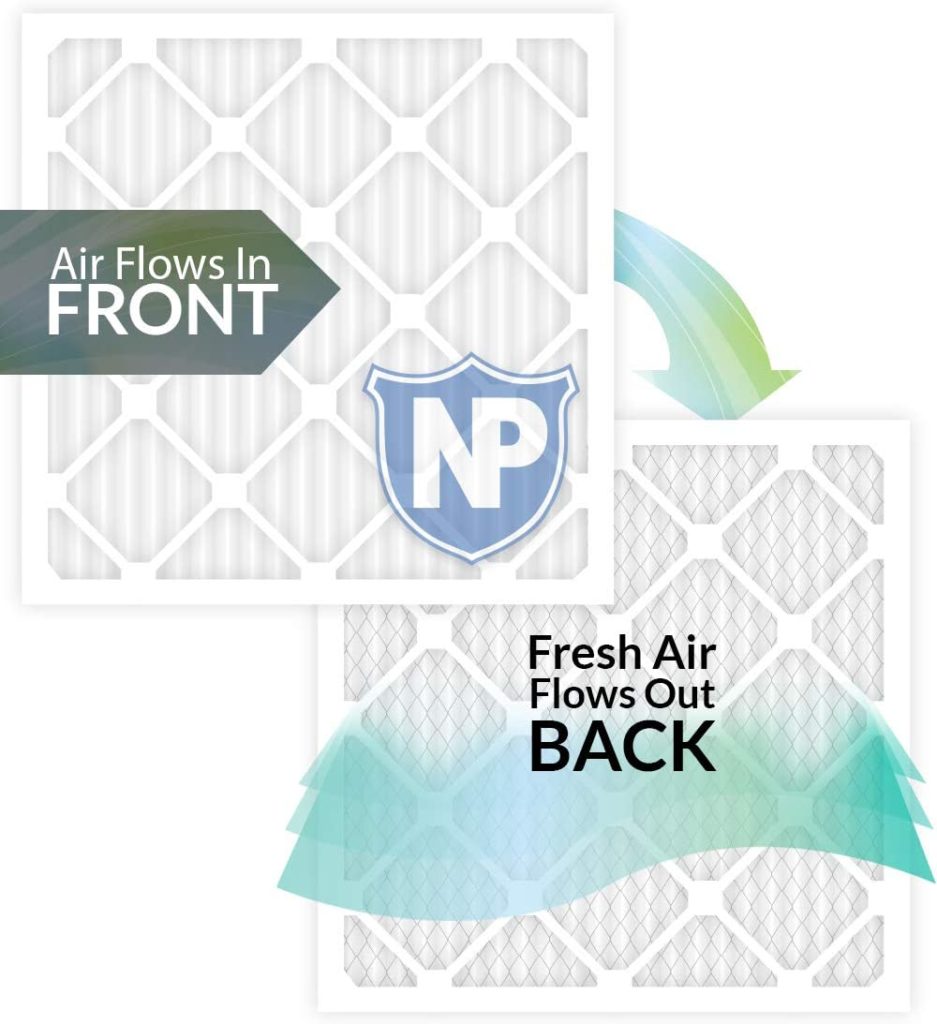
I recently purchased a single high-end MERV 14 electret furnace filter in-person at Wal-Mart for just over $20.
Generic Round HEPA filters are $15 each when you purchase a 2-pack on Amazon.
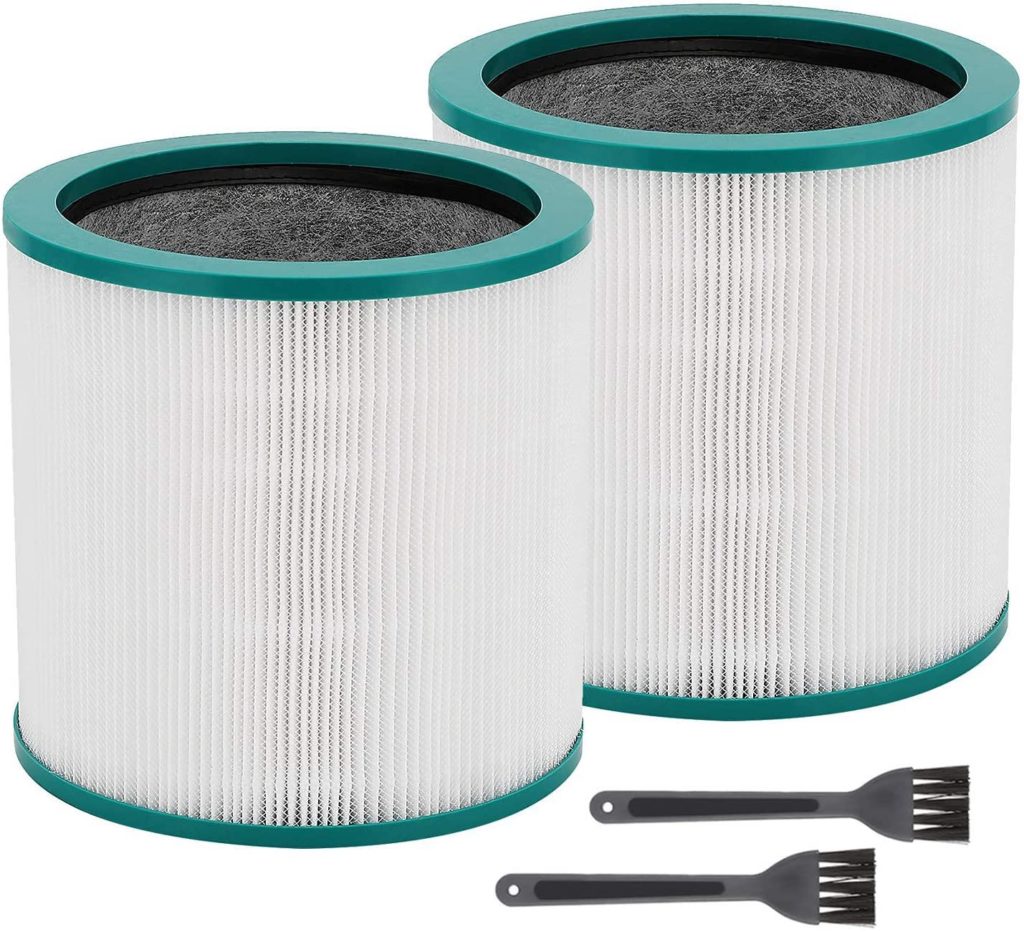
To be honest, when you see how dirty and nasty air filters get, you may not care about the price. Plus, you’ll probably have zero desire to wash them. Not to remention:
Washable filters don’t work.
An air purifier with washable filter is like a car with no engine. It doesn’t matter if it “saves a ton of money on gas.” It still doesn’t go anywhere.
Popular Articles on ComproGear
Best Compression Socks for Nurses Compression Socks for Women Nurses
Better Indoor Air Quality
If not washable filters, what does work?
Blowing air over disposable filters.
That’s basically it. That’s every viable air purifier in a nutshell.
If you want more actionable knowledge, then here’s what I would recommend…
Step 1: Source Control
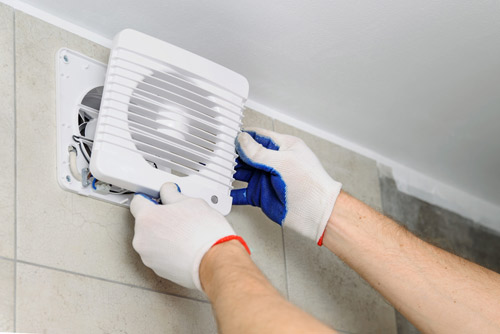
Remove the source of any particular matter and pollutants in your house. This means having working bathroom fans, kitchen exhaust fans and vacuuming frequently. If you’re changing flooring at any point, get rid of your carpets. Area rugs with hard floors are way nicer than wall-to-wall carpet on so many levels.
If you have pets, put a sheet over your bed during the day. Then at night kick the pets out of the bedroom and remove the sheet before getting into bed.
Get dust mite proof pillow and mattress covers, and wash your bedding at least once a week. A $50 IKEA duvet cover that you put over your comforter makes easy washing possible.
Step 2: Cheap Filtration
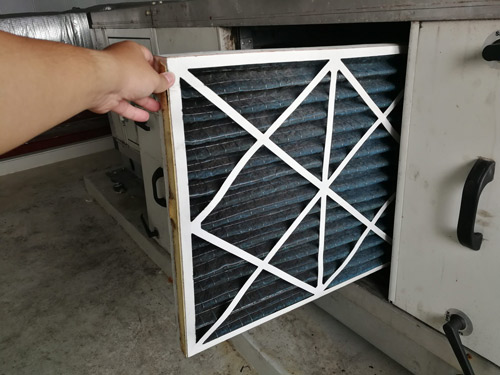
Make sure your furnace filter is changed regularly. Set a recurring calendar event to change the furnace filter regularly and stick to the schedule.
You can reasonably get one to six months out of a furnace filter. I’d stick with MERV 11 filters. You can test out MERV 13+ filters, but be warned that your furnace fan might not be able to handle the pressure drop and system damage could result.
Want to go one step further? You can make the world’s cheapest air purifier out of a box fan and a furnace filter. It’s super-effective and costs less than $40.
Here’s what to do:
- First, go buy a couple of $18 box fans.
- Then get the highest MERV furnace filters you can get your hands on.
- I generally look for MERV 13 filters, as these are a good tradeoff between filtration and cost, though anything MERV 11 and up will work.
- The size of most box fans is 20″x20″, so aim for that size. Larger is fine, but they’ll stick out past the sides and look silly.
- Thicker filters are better for this purpose.
- A 2″ filter is better than a 1″ filter, and a 4″ filter is better than both. Thicker filters actually have a lower pressure drop, meaning they are easier for the fan to breathe through. It sounds counter-intuitive, I know. But thicker filters mean more surface area. More surface area means less resistance to airflow. Think of it like breathing through a straw. Adding more straws makes it easier to breathe. Adding more filter surface area makes it easier for the fan to breathe.
- Place the furnace filter on the intake side of the fan. The fan will suck the filter to its surface and keep it in place.
- If you want to get real fancy, tape up the edges to seal the filter and improve efficiency. This is not necessary though. You can pick up a lot of contaminants just with the fan and filter. Just look at the furnace filter after two or three months. All that junk used to be going into your lungs.
Step 3: HEPA Filters
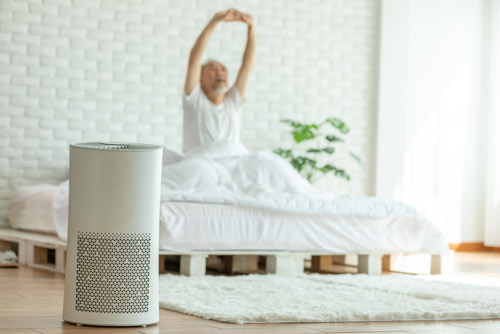
Next, you’ll want to get several quality HEPA air purifiers. Start in the bedroom, since you’re probably spending at least eight hours a day there. Then as you have the money, buy HEPA filters for the most used rooms in the house.
Those cheap box-fan-furnace-filters will catch a lot of particulate and make your house really clean. But nothing compares to a HEPA filter for catching ultra-fine particulate matter.
Stick with What Works
Don’t waste your money on air purifiers with washable filters. Not only are they annoying to wash, adding an extra chore to your week, but THEY JUST DON’T WORK.
Stick to quality HEPA filters. You’re health and body deserve it!
What Air Purifier to Buy?
All HEPA Air Purifiers do the same thing: use a fan to blow air over a HEPA Filter (which is essentially just borosilicate glass fibers).
It can have washable pre-filters. These are fine, and a great way to extend the life of the main HEPA filter. The important part, though, is it needs to have the HEPA filter.
What model air purifier to buy?
When choosing which model air purifier to get, I’d suggest the Coconut Air CocoCube Car Air Purifier.

The CocoCube took over a year in development. It’s got 2x HEPA Filters sandwiching a 12.80mm Activated Carbon bed. Most competitors only use a thin dusting of activated carbon for marketing purposes. Then they don’t filter after the activated carbon, so you’re potentially getting carbon dust in your lungs (not good!). The CocoCube is clearly the best air purifier for cars.
The Coconut Air CocoCube Car Air Purifier is also completely silent. You heard that right. At 18 decibels, the only time you can hear it is if you stick your eardrum right next to the fan. In comparison, a whisper is 25 decibels. Competing quiet air purifiers are 22 decibels on the lowest setting. And they only go up from there, peaking out at 45+ decibels.
With multiple settings, you’re left with a stressful paradox of choice. Should you set it on low and have less air filtration? Or set it on high and listen to the annoying noise?
With the Coconut Air CocoCube Car Air Purifier, you simply plug it in and it works. No speed settings. No annoying blinking lights. Best of all, it doesn’t require a PhD to operate the patent-pending Wifi-enabled home-kit smart app.
How is this level of low noise possible? Fan quality. The Coconut Air Quad uses mag-lev bearing axial flow Noctua fans meant for high-end computer equipment. Other air purifiers use cheap centrifugal fans with sleeve bearings. The ubiquitous fan is what makes other air purifiers annoyingly loud, energy-intensive to operate and prone to early failure.
Cheap fans are also more expensive to operate. Most air purifiers cost $60 per year in electricity. The CocoCube is $0.87 per year (assuming 24/7 operation @ $0.13/kWh). Doesn’t sound like a lot, but over 10-years the difference is $600 vs $9.
If you’re looking for a high-end unit that costs a little more upfront but is cheaper in the long run, check out the Coconut Air CocoCube Car Air Purifier.